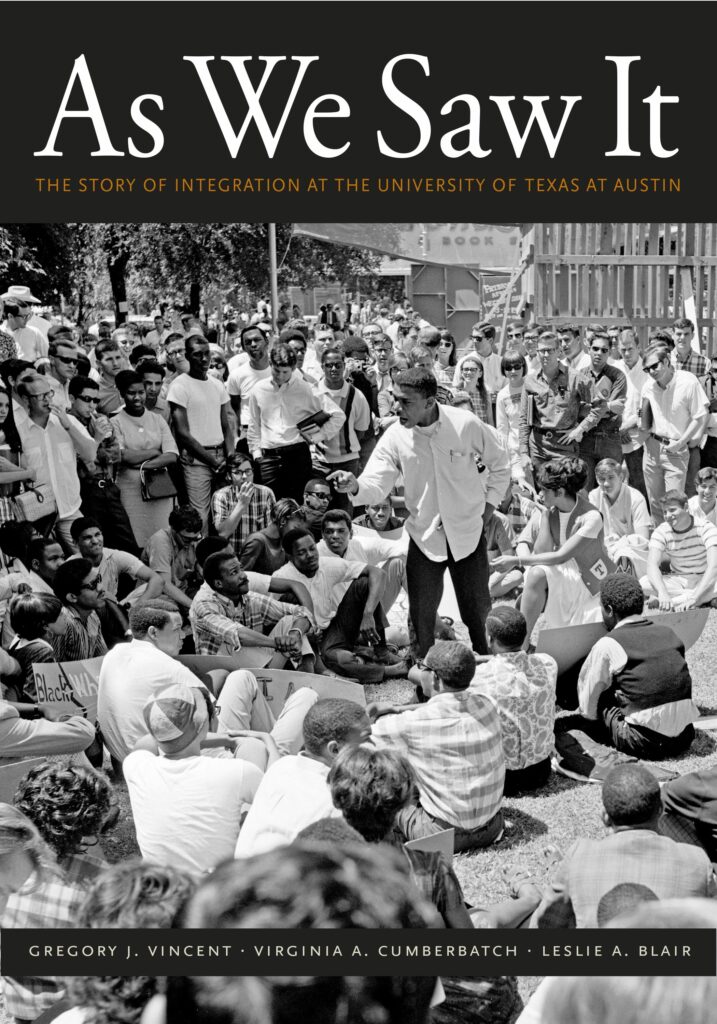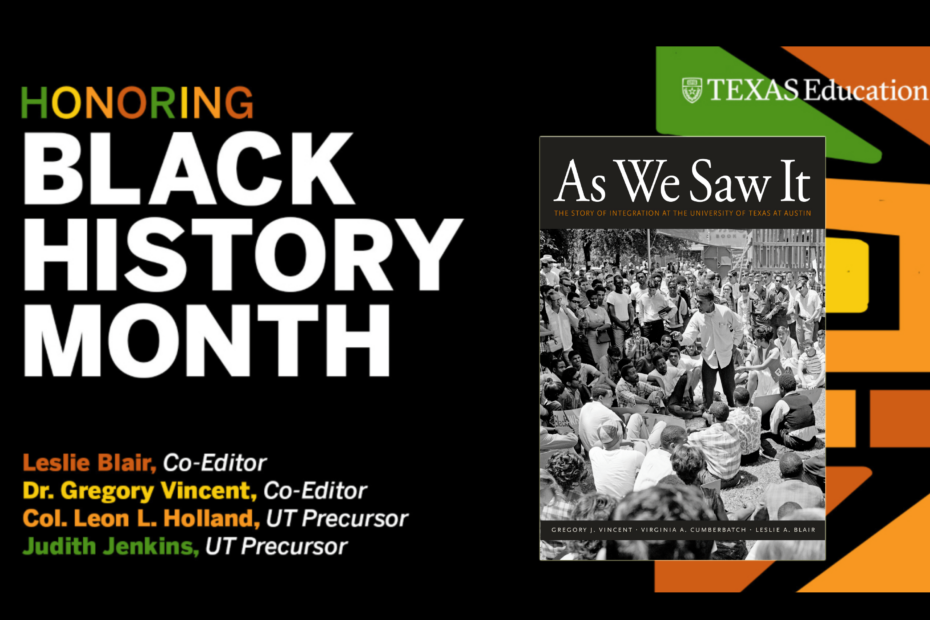Vincent Strategies CEO Dr. Gregory J. Vincent and Project Director Leslie Blair recently served on a panel for the University of Texas at Austin College of Education to discuss the book As We Saw It: The Story of Integration at the University of Texas at Austin. Dr. Vincent and Blair were co-editors of the book, along with Virginia A. Cumberbatch. Also on the panel were two of the first Black undergraduates to enter, Retired Colonel Leon Holland and Ms. Judith Jenkins.
The brief slide show used for the presentation touched on the many challenges of being the first Black students at a predominately White, public flagship institution. They entered an academic space openly hostile to their presence and rarely saw someone who looked like them in their classrooms. But they stuck together, becoming lifelong friends bound by a common experience and forever changing the face of the university.
The panel discussion touched on some of the experiences of Col. Holland and Ms. Jenkins, but also on those of Heman Sweatt, the first African American admitted to the School of Law at UT after the 1950 Supreme Court decision in Sweatt v. Painter.
 Sweatt was a postal worker from Houston, Texas, who dreamed of attending law school. In 1950, the Supreme Court ruling in Sweatt v. Painter forced the University of Texas to become the first major research institution in the South to desegregate. Heman Sweatt entered the UT Law School in the fall semester of 1950, along with five other Black men. After that decision the Graduate School was also forced to accept Black students, including scholar Oscar Thompson and architect John Chase.
Sweatt was a postal worker from Houston, Texas, who dreamed of attending law school. In 1950, the Supreme Court ruling in Sweatt v. Painter forced the University of Texas to become the first major research institution in the South to desegregate. Heman Sweatt entered the UT Law School in the fall semester of 1950, along with five other Black men. After that decision the Graduate School was also forced to accept Black students, including scholar Oscar Thompson and architect John Chase.
Thompson became the first African American to graduate from the university and became a researcher at UT’s Human Genetics Foundation before his death in 1962. John Chase became a renowned Texas architect known for his distinctive designs based on the Usonian ideals of Frank Lloyd Wright and his philosophy for designing churches and public buildings.
Undergraduates like Holland and Jenkins weren’t admitted until 1956. Progress remained slow, however. By 1971, only 1% of the student population at UT was black. Heman Sweatt’s nephew, also named Heman Sweatt, arrived at UT in the early 1970s and recalled not seeing another Black student for two weeks. When As We Saw It was first published in 2017, the percentage of Black and mixed-race students who identified as Black, hovered around 5%.
The Precursors are forever integral to the history of the University of Texas, the city of Austin, the state of Texas and higher education across the nation. The process of integration, scars and all, should be recognized and remembered, especially now in a changing national landscape amid public attempts to marginalize the tremendous accomplishments of men and women like the Precursors—those who blazed paths that African American students still follow.

